Hang Kenh Communal House, or Nhan Tho Communal House, stands as a remarkable testament to Vietnam’s rich culture and history. Known for its unique architecture and historical significance, this ancient communal house has been a center of worship and cultural gatherings for over three centuries. When visiting, you will gain insights into the traditions and values that have shaped the region.
Where is Hang Kenh Communal House?
The communal house is situated at No. 55 Nguyen Cong Tru Street, in the Hang Kenh Ward of Le Chan District, within Hai Phong City. This prime location places it right in the center of Hai Phong, a city known for its vibrant energy and historical significance. The communal house’s accessibility is a crucial feature, as a variety of transportation options can easily reach it. Visitors can conveniently arrive by car, motorbike, or public transport, making it an ideal destination for both locals and tourists alike.
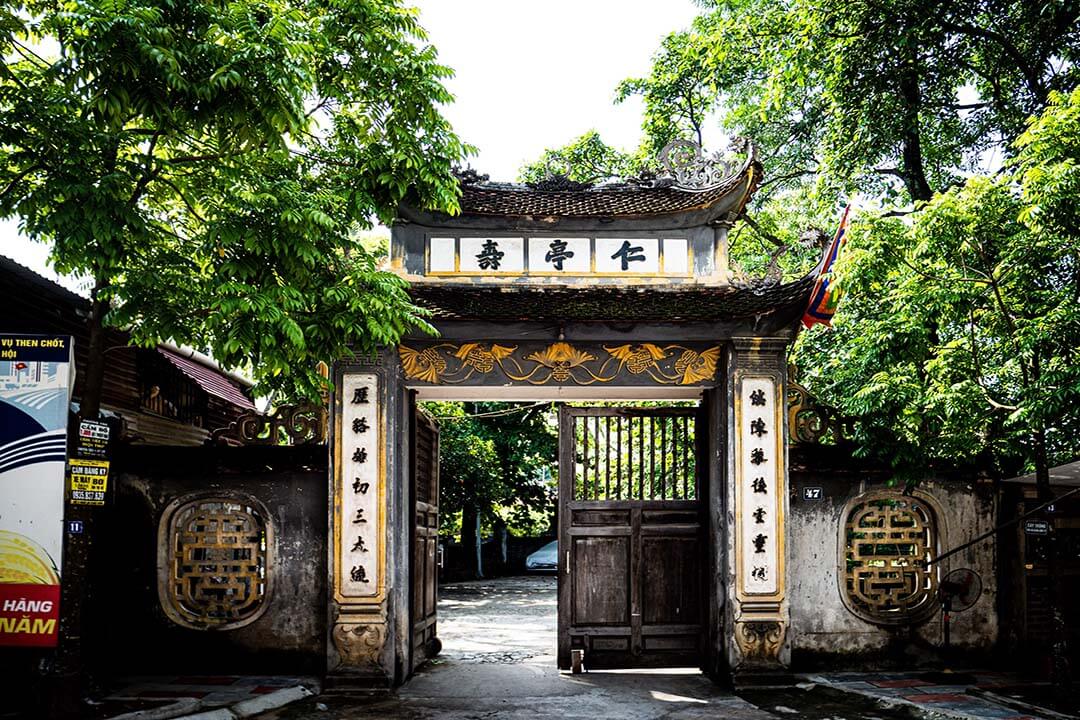
The strategic position of Hang Kenh Communal House enhances its role as a significant cultural landmark. Its central placement not only makes it prominent but also integrates it seamlessly into the everyday life of the city. As such, it offers a unique opportunity for visitors to delve into its historical and architectural richness while enjoying the dynamic atmosphere of Hai Phong.
History of Hang Kenh Communal House
The communal house was constructed between the 17th and 18th centuries and is a significant historical and cultural site in Vietnam. Originally built to honor the village tutelary god, it later gained added importance when King Tu Duc of the Nguyen Dynasty designated it as a shrine to King Ngo Quyen. King Ngo Quyen is celebrated for his victory over the Nam Han invaders at the Battle of Bach Dang River in 938, a pivotal event that marked the beginning of Vietnam’s era of independence and self-reliance. This designation underscores the communal house’s role in commemorating key figures and moments in Vietnamese history.
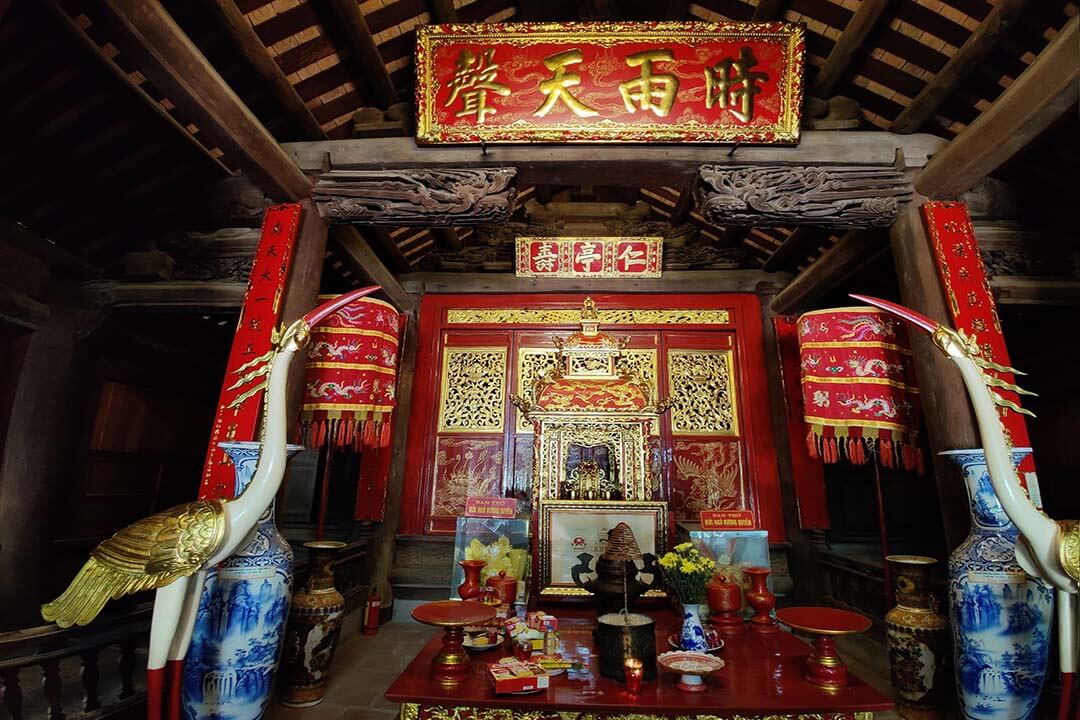
The communal house underwent significant renovations in 1905, which expanded and enhanced its structure to accommodate the needs of the growing community. These renovations reflect both the historical significance and the evolving architectural styles of the time. Today, Hang Kenh Communal House stands as a living monument to Vietnam’s rich cultural and political history, offering visitors a chance to explore its architectural beauty and understand its role in the country’s historical narrative.
Things to do in Hang Kenh Communal House
Visiting the communal house offers a range of engaging activities that capture the essence of Vietnamese culture and history. Here are some highlights
Take lots of lovely photos
The communal house, with its stunning architecture and serene atmosphere, is a photographer’s dream. Its intricate designs and traditional motifs offer endless possibilities for capturing beautiful images. The house features intricate designs and traditional motifs that provide endless options for creating stunning images. The elaborate wooden carvings, ornate roof decorations, and elegant courtyards contribute to the house’s visual appeal, with each angle presenting a potential shot for your camera.
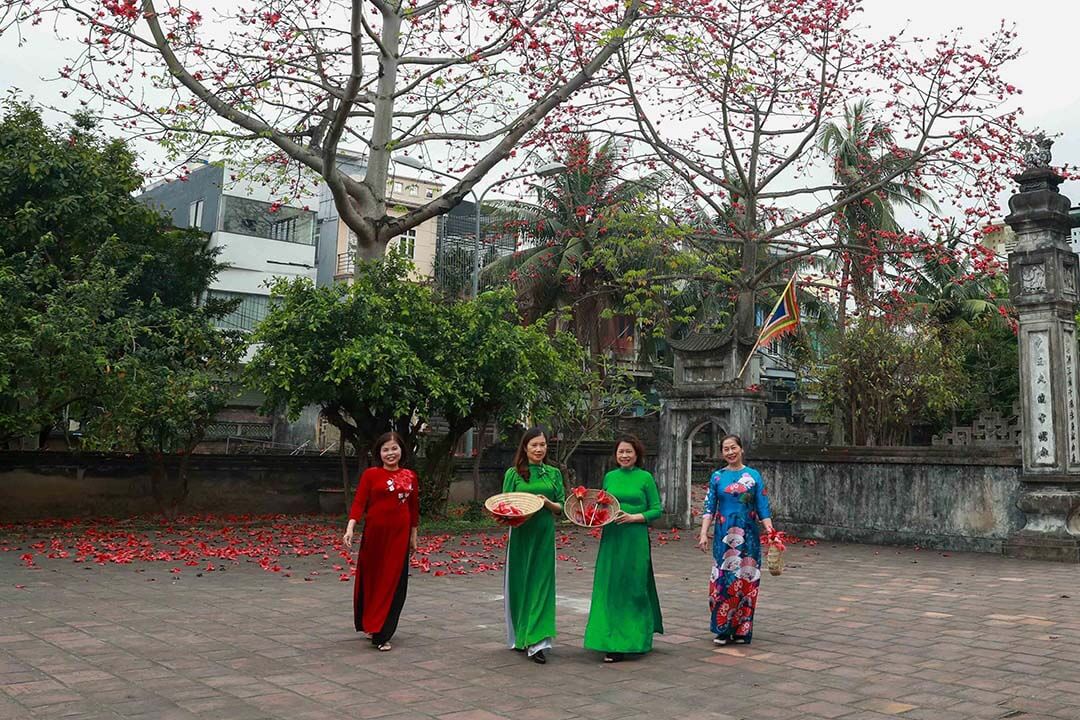
In front of the communal house, you’ll find several vibrant red cotton trees adorned with brilliant red flowers. These trees add a striking contrast to the architectural elements and enhance the picturesque setting. The lush greenery surrounding the house further complements the scene, blending natural beauty with traditional design.
Whether you’re focusing on the grandeur of the building or the delicate details of its design, the communal house offers a rich array of photographic opportunities. The serene environment and vivid colors create an ideal backdrop for both professional photographers and enthusiastic amateurs, ensuring that your photo collection will be filled with memorable and captivating images of this historic site.
Enjoy folk culture art & watch water puppet performance
The communal house is a cultural hub where visitors can immerse themselves in traditional Vietnamese folk art. One of the highlights of a visit is the opportunity to witness water puppet performances, a time-honored art form with roots in the Red River Delta region.
This unique performance involves puppets dancing on water, accompanied by live traditional music and narrated stories that reflect Vietnam’s rich folklore and rural life. There are also water puppet shows that are no less attractive than the shows at the Thang Long Water Puppet Theater. The puppetry is both mesmerizing and educational, offering insights into the cultural heritage and storytelling techniques of the Vietnamese people.
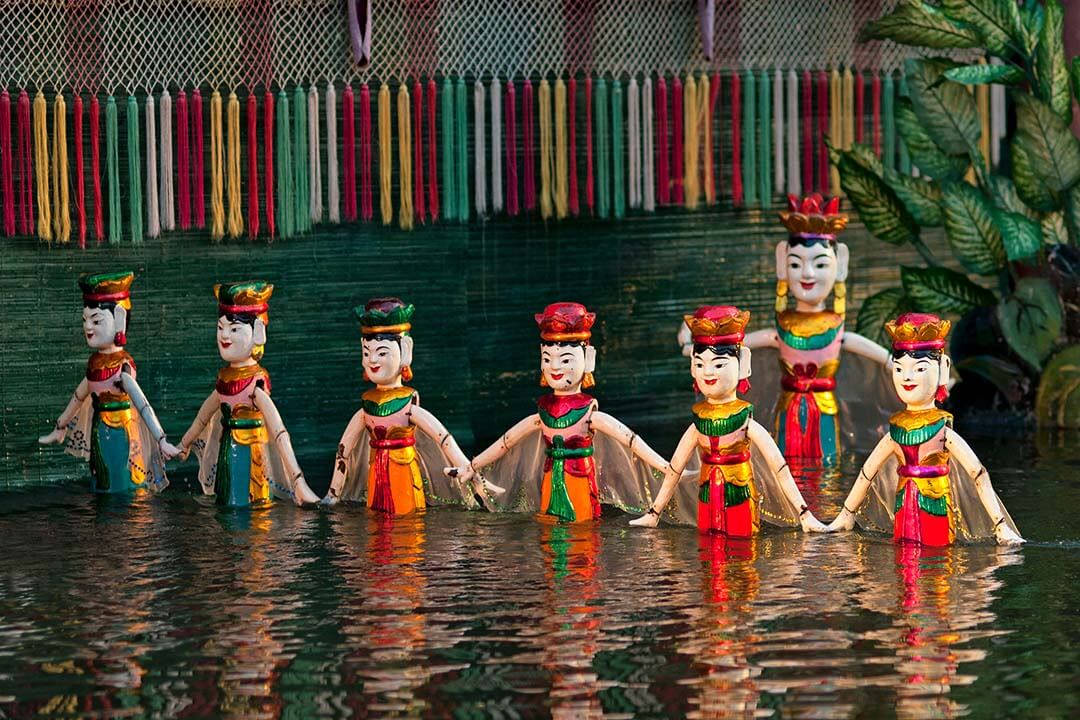
The water puppet shows at Hang Kenh Communal House are more than just entertainment they provide a deep cultural experience that brings Vietnamese traditions to life. The performances often depict scenes from everyday life, historical events, and local legends, all conveyed through the skillful manipulation of puppets and expressive music.
The combination of vibrant costumes, intricate puppet designs, and live orchestration creates an immersive atmosphere that enriches the visitor’s experience. By enjoying these performances, guests can gain a greater appreciation for the artistry and historical significance of Vietnamese folk culture, making their visit to the communal house both memorable and culturally enriching.
Pray your wishes in Hang Kenh Communal House
The communal house is a revered spiritual site where visitors come to offer prayers and seek blessings. Dedicated to the village tutelary god and King Ngo Quyen, the house serves as a sacred space for expressing hopes and desires through traditional rituals. Visitors bring offerings of incense, fruits, and flowers, which are placed on the altars to invoke the blessings of the deities. The serene environment, combined with the house’s historical significance, offers a moment of reflection and spiritual connection.
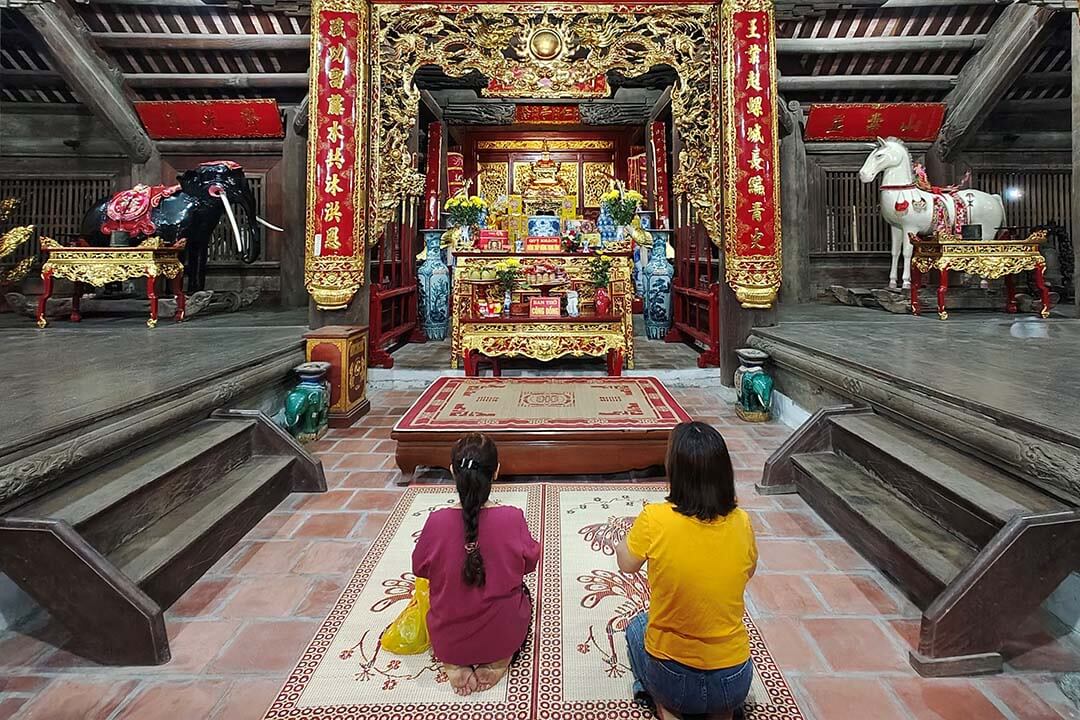
Participating in or witnessing these rituals provides a unique insight into Vietnamese spiritual traditions and the cultural importance of the communal house. The experience of making wishes at Hang Kenh Communal House allows visitors to engage deeply with the local culture and understand the enduring values that have shaped the community. Whether praying for health, prosperity, or personal happiness, the visit is an enriching experience that resonates with the spiritual essence of Vietnam.
Other attractions in Hai Phong City
Hai Phong City is rich with various attractions that complement a visit to Hang Kenh Communal House. Here are some must-see sites
Hai Phong Museum
Hai Phong Museum is a crucial cultural institution that offers a rich collection of artifacts tracing the city’s history from ancient times to the present. The museum’s exhibits feature archaeological finds, traditional costumes, and relics from significant historical periods, each providing insights into the daily lives, spiritual practices, and customs of the region’s inhabitants. By exploring these collections, visitors gain a deep understanding of Hai Phong’s past and its role in Vietnam’s broader history.
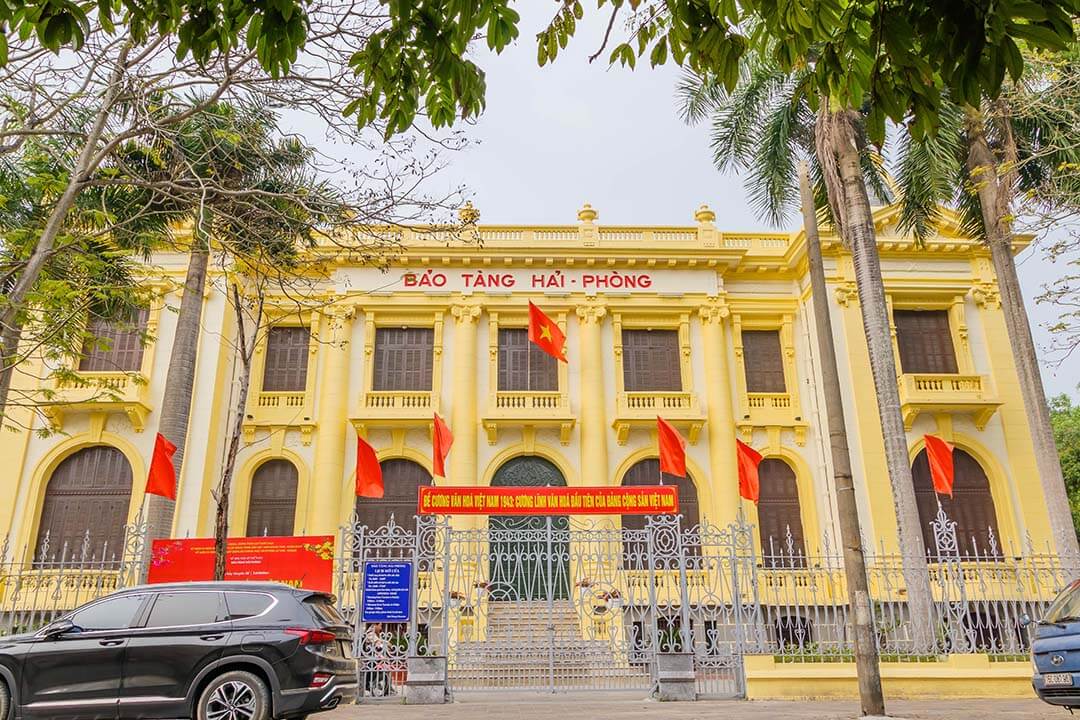
In addition to historical artifacts, the museum also showcases contemporary exhibits that highlight ongoing cultural and artistic developments in the region. These displays provide a fascinating contrast to the ancient relics, illustrating how traditional art forms have influenced modern expressions. The combination of historical and contemporary exhibits offers a comprehensive view of Hai Phong’s cultural evolution, making the museum an essential destination for those looking to connect with the city’s rich heritage.
Bach Dang Giang Relic
The Bach Dang Giang Relic, situated along the Bach Dang River, is a pivotal historical site commemorating the famous naval battle of 938. This battle, lead by King Ngo Quyen, marked a decisive victory over the Nam Han invaders and was a crucial moment in Vietnam’s history, symbolizing the nation’s struggle for independence. The relic site includes several historical landmarks, such as statues, memorials, and plaques that recount the events of the battle and honor the heroism of King Ngo Quyen and his forces.
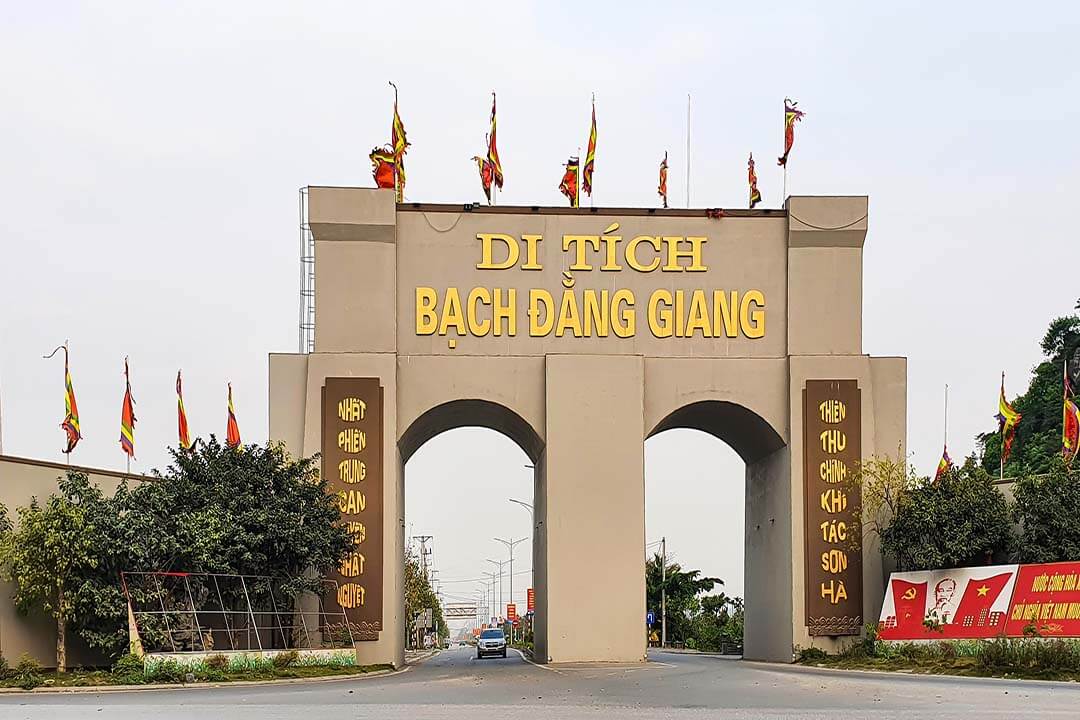
Visitors to the Bach Dang Giang Relic can explore these historical markers while enjoying the scenic beauty of the Bach Dang River. The tranquil river views and the surrounding landscape provide a picturesque backdrop that enhances the experience of learning about Vietnam’s past. For history enthusiasts and those interested in Vietnam’s rich heritage, the site offers a meaningful and reflective visit, combining educational insights with natural beauty.
Cat Ba Island
Cat Ba Island, the largest island in the Cat Ba Archipelago, is celebrated for its breathtaking natural beauty and rich biodiversity. The island boasts pristine beaches with crystal-clear waters, lush forests teeming with wildlife, and dramatic landscapes that range from towering cliffs to tranquil coves. Visitors can immerse themselves in a variety of outdoor activities, including hiking through the dense jungle of Cat Ba National Park, swimming in the inviting waters of its beaches, and exploring the island’s diverse flora and fauna.

The island’s natural environment offers numerous opportunities for adventure and relaxation. Hiking trails lead to panoramic viewpoints overlooking the stunning scenery, while the calm waters around the island are perfect for swimming and kayaking. Additionally, Cat Ba Island’s unique ecosystems provide a fascinating backdrop for wildlife enthusiasts and nature lovers. Whether you’re seeking an active outdoor experience or a peaceful retreat in nature, Cat Ba Island is an ideal destination that caters to both adventure seekers and those looking to unwind amidst spectacular surroundings.
Lan Ha Bay
Lan Ha Bay, located adjacent to the renowned Halong Bay, offers a serene and picturesque retreat with its tranquil waters and striking limestone formations. Unlike its more famous neighbor, Lan Ha Bay is known for its less crowded environment, allowing visitors to enjoy a more peaceful and intimate experience. The bay’s natural beauty includes numerous small islands, hidden coves, and lush greenery, creating an ideal backdrop for relaxation and adventure.

Visitors to Lan Ha Bay can engage in a variety of activities, such as boat tours that showcase the bay’s stunning landscapes, kayaking through its calm waters, and exploring secluded beaches that provide a sense of solitude and escape. The bay’s serene setting makes it a perfect destination for those seeking both relaxation and exploration. Whether you’re interested in leisurely cruising or discovering hidden spots, Lan Ha Bay offers a tranquil and rewarding experience for nature lovers and adventure seekers alike.
Hai Phong Station
Hai Phong Station is both an architectural landmark and a vital transportation hub in the city. Serving as a gateway for travelers, the station is steeped in historical significance, reflecting the colonial architecture of the early 20th century. Its design features classic elements like arched windows, ornate detailing, and a grand facade, all of which evoke the charm and elegance of a bygone era. The station not only serves a practical purpose but also offers visitors a visual connection to Hai Phong’s rich history, making it an interesting site to explore.
The bustling atmosphere of Hai Phong Station adds to its appeal, as it remains a central point of activity in the city. Trains arriving and departing create a dynamic environment where the past and present intersect. Whether you’re a history enthusiast or simply passing through, the station provides a unique opportunity to experience a piece of Hai Phong’s architectural and cultural heritage. The blend of historical design and modern function makes Hai Phong Station a significant and memorable destination within the city.
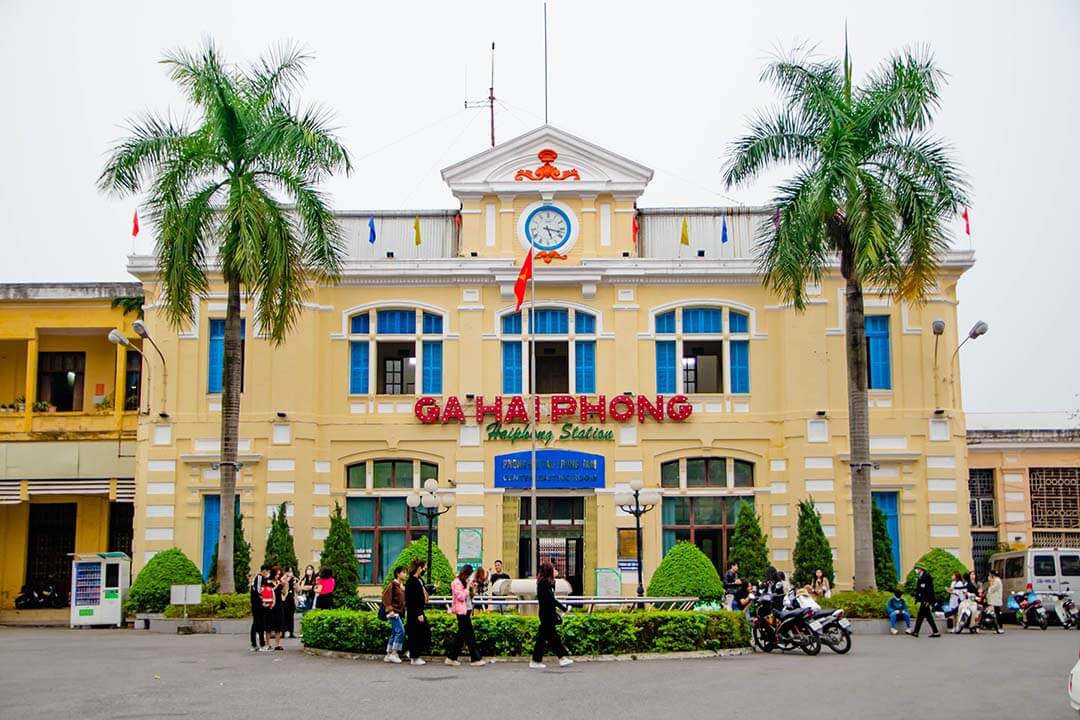
Hang Kenh Communal House is a symbol of Vietnam’s cultural and spiritual heritage. With its rich history, unique architecture, and vibrant cultural activities, it offers an enriching experience for visitors. Alongside other attractions in Hai Phong, Hang Kenh Communal House enhances the city’s appeal as a travel destination. For those interested in exploring the beautiful country of Vietnam and understanding its traditions and history, please visit Vietnam Travel Tips for more information.


